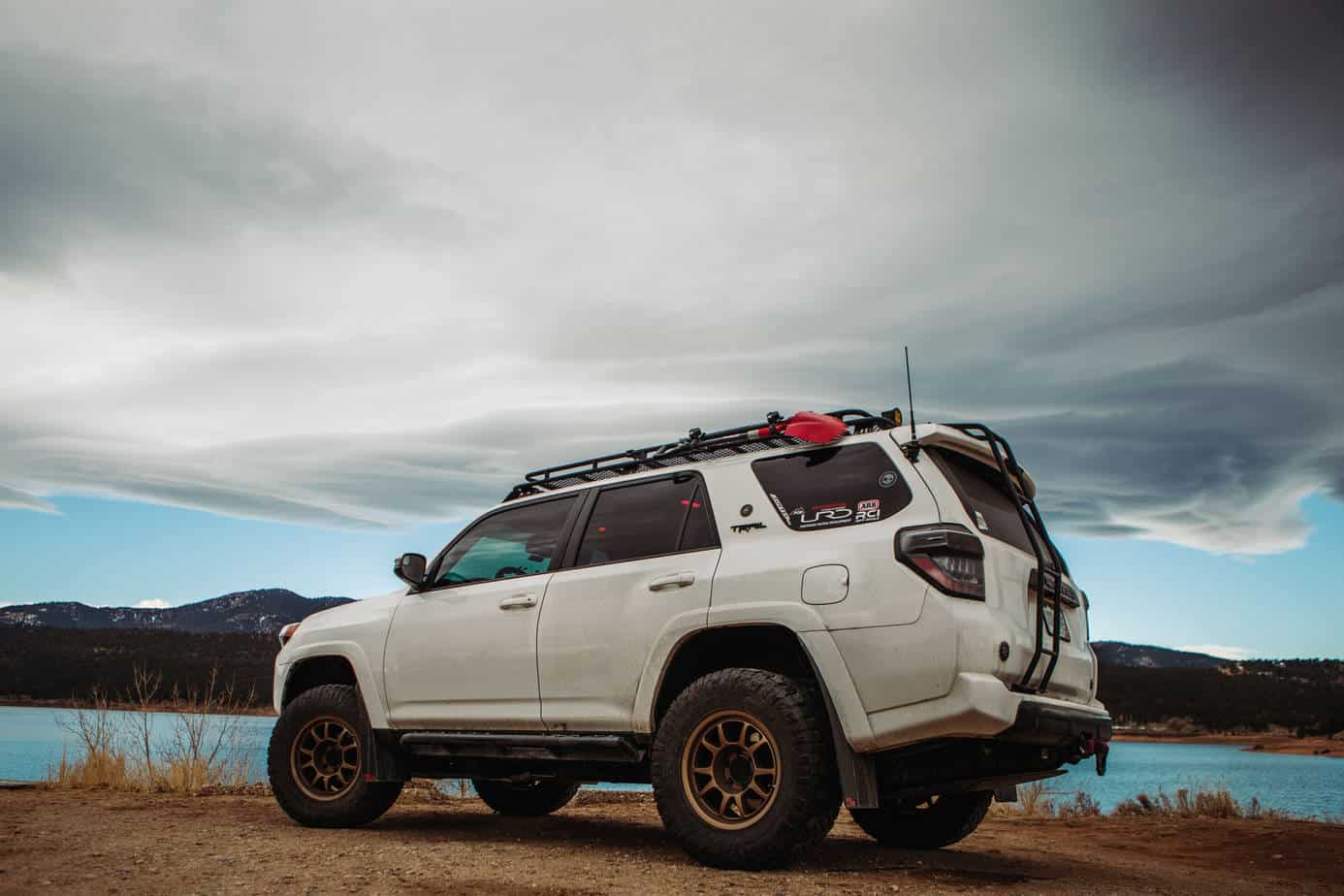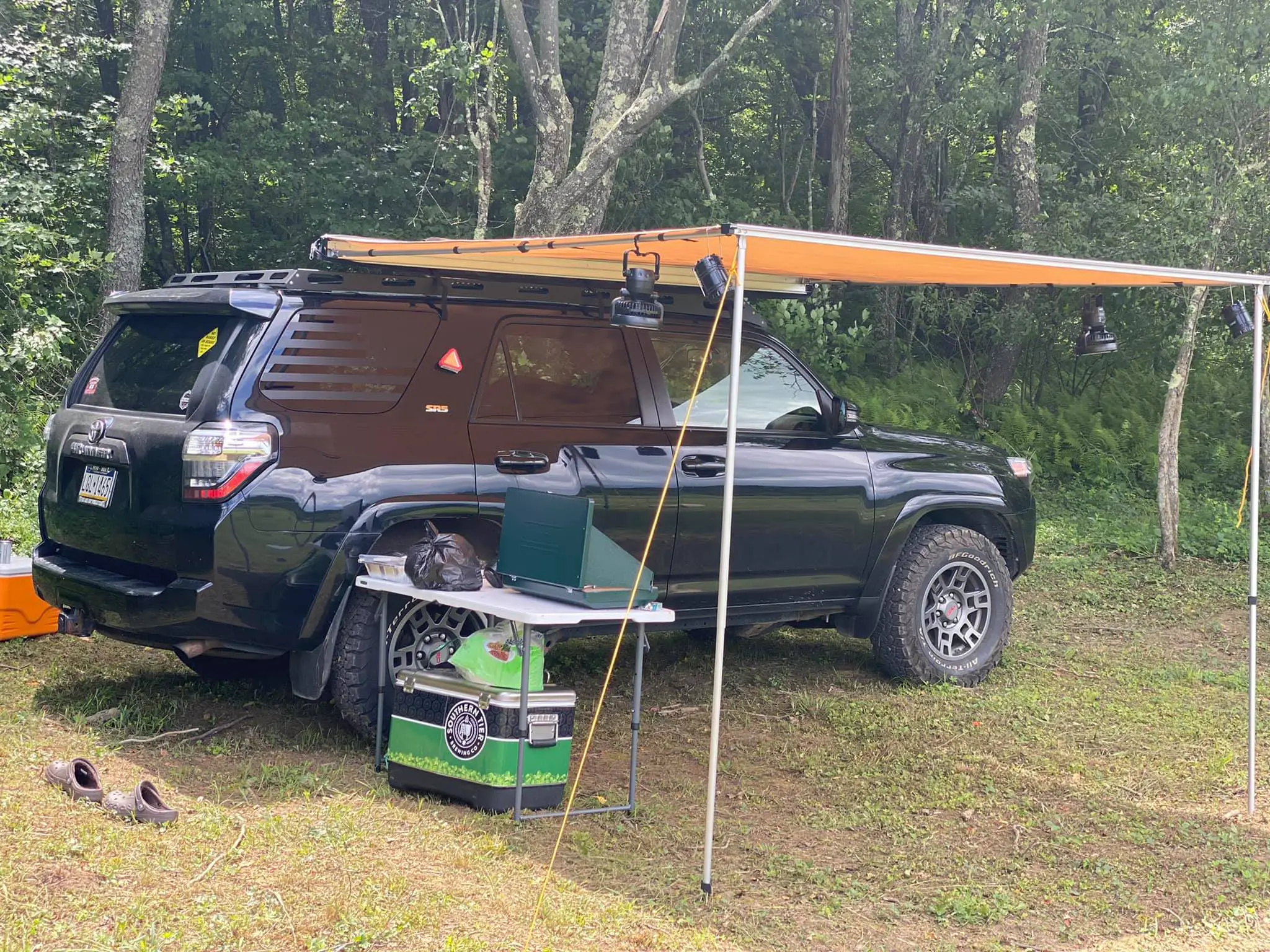The Toyota 4Runner’s KDSS: A Comprehensive Review
The Toyota 4Runner’s KDSS: A Comprehensive Review
Related Articles: The Toyota 4Runner’s KDSS: A Comprehensive Review
Introduction
With great pleasure, we will explore the intriguing topic related to The Toyota 4Runner’s KDSS: A Comprehensive Review. Let’s weave interesting information and offer fresh perspectives to the readers.
Table of Content
The Toyota 4Runner’s KDSS: A Comprehensive Review

The Toyota 4Runner, renowned for its rugged off-road capabilities and enduring reliability, has been a popular choice for adventurous drivers for decades. One of the key features that contributes to the 4Runner’s exceptional off-road performance is its optional Kinetic Dynamic Suspension System (KDSS). This innovative technology, first introduced in 2003, has significantly enhanced the 4Runner’s handling, comfort, and overall driving experience, particularly in challenging terrain.
Understanding KDSS: How It Works
KDSS is a hydraulically controlled suspension system designed to optimize the 4Runner’s performance both on and off-road. Its primary function is to actively control the sway bars, which are responsible for controlling body roll during cornering and off-road maneuvers.
Here’s a breakdown of how KDSS operates:
-
Hydraulic Actuators: The system utilizes hydraulic actuators connected to the sway bars. These actuators are controlled by a sophisticated electronic system that monitors various vehicle parameters, including speed, steering angle, and suspension travel.
-
Sway Bar Disconnection: When the 4Runner encounters rough terrain or is navigating tight turns at high speeds, the KDSS system detects the need for increased suspension articulation. It then disconnects the sway bars, allowing the wheels to move independently, improving wheel travel and off-road traction.
-
Sway Bar Reconnection: When the 4Runner is on smooth roads or driving at higher speeds, the KDSS system automatically reconnects the sway bars. This reconnection increases body rigidity, enhancing stability and handling.
Benefits of KDSS
The inclusion of KDSS on the 4Runner offers a range of benefits, significantly improving its driving dynamics and overall performance:
-
Enhanced Off-Road Performance: By disconnecting the sway bars, KDSS allows the wheels to move independently, maximizing suspension articulation and tire contact with the ground. This translates to superior traction, stability, and control when navigating challenging terrain, such as rocky trails, uneven surfaces, and steep inclines.
-
Improved On-Road Handling: When the sway bars are connected, KDSS significantly reduces body roll during cornering, resulting in a more stable and predictable driving experience. This enhanced handling provides greater confidence and control on paved roads, even at higher speeds.
-
Increased Comfort: The KDSS system’s ability to adapt to various driving conditions contributes to a more comfortable ride. By reducing body roll, it minimizes the jarring movements often experienced on uneven roads, making the 4Runner more pleasant to drive on both paved and unpaved surfaces.
-
Enhanced Safety: The improved handling and stability provided by KDSS enhance the 4Runner’s overall safety. The system helps to minimize the risk of rollovers and improves the driver’s ability to maintain control in challenging situations.
KDSS Limitations
While KDSS offers a significant advantage in terms of off-road performance and on-road handling, it’s important to note that it does have some limitations:
-
Increased Complexity: The hydraulic actuators and electronic control system of KDSS add complexity to the suspension system, potentially increasing the risk of failure or requiring more complex repairs.
-
Higher Maintenance Costs: The sophisticated components of KDSS may necessitate more frequent maintenance and potentially higher repair costs compared to conventional suspension systems.
-
Potential for System Failure: Like any complex mechanical system, KDSS can experience malfunctions, which could affect its functionality and potentially compromise the vehicle’s handling and stability.
KDSS: A Comprehensive Review
The Toyota 4Runner’s KDSS system represents a significant advancement in off-road technology. Its ability to actively control the sway bars provides a tangible improvement in the 4Runner’s off-road performance, on-road handling, and overall comfort. While it does come with some limitations, particularly in terms of complexity and maintenance, the benefits it offers to the 4Runner’s driving dynamics make it a highly desirable feature for those who seek a capable and versatile SUV.
FAQs
Q: Is KDSS available on all Toyota 4Runner models?
A: KDSS is not standard equipment on all 4Runner models. It is typically offered as an option on higher trim levels and specific model years. It’s important to check the specifications of the specific 4Runner model you are interested in to determine if it comes equipped with KDSS.
Q: How do I know if my 4Runner has KDSS?
A: You can identify if your 4Runner has KDSS by checking the vehicle’s window sticker or the owner’s manual. Additionally, you can look for the KDSS badge located on the rear suspension near the spare tire.
Q: Does KDSS affect fuel economy?
A: KDSS is designed to be efficient and does not have a significant impact on fuel economy. However, the overall fuel consumption of the 4Runner will depend on factors such as driving conditions, engine size, and tire size.
Q: Can I add KDSS to my 4Runner if it doesn’t have it?
A: Retrofitting KDSS to a 4Runner that did not come equipped with it is a complex and expensive undertaking. It would require significant modifications to the suspension system, including new components and potentially a new control module. It is generally not recommended to attempt this modification.
Q: How do I maintain KDSS?
A: Maintaining KDSS involves regular inspection and fluid changes. It’s recommended to consult the 4Runner’s owner’s manual for specific maintenance recommendations. A qualified mechanic should perform any necessary repairs or adjustments to the KDSS system.
Tips for Driving a 4Runner with KDSS
-
Understand the System: Familiarize yourself with the operation and capabilities of KDSS. This knowledge will help you make informed decisions regarding driving style and terrain selection.
-
Don’t Over-rely on KDSS: KDSS is a valuable tool, but it’s not a substitute for good driving techniques. Always drive responsibly and be aware of the limitations of the vehicle.
-
Regular Maintenance: Adhere to the recommended maintenance schedule for the KDSS system to ensure its optimal performance and longevity.
Conclusion
The Toyota 4Runner’s KDSS system is a testament to the company’s commitment to innovation and performance. By enhancing the vehicle’s off-road capabilities, on-road handling, and overall comfort, KDSS elevates the 4Runner’s driving experience to new heights. While it does come with some limitations, the benefits it offers make it a highly desirable feature for those seeking a capable and versatile SUV. Whether you’re tackling challenging trails or cruising on paved roads, the 4Runner’s KDSS system helps ensure a safe, confident, and enjoyable driving experience.






Closure
Thus, we hope this article has provided valuable insights into The Toyota 4Runner’s KDSS: A Comprehensive Review. We hope you find this article informative and beneficial. See you in our next article!
You may also like
Recent Posts
- The 2025 Toyota 4Runner: A Legacy Reimagined
- The Enduring Appeal Of The Toyota 4Runner Manual Transmission 4×4
- The Toyota 4Runner TRD Off-Road: A Legacy Of Adventure, Reimagined For 2025
- The Anticipation Builds: Unveiling The Next Generation Toyota 4Runner
- The 2025 Toyota 4Runner TRD: A Legacy Of Adventure Reimagined
- The Future Of Color: Exploring The Significance Of Color Trends
- The Toyota 4Runner: A Legacy Of Capability, Now With Expanded Seating
- The Toyota 4Runner Timing Belt: A Vital Component For Engine Longevity
Leave a Reply